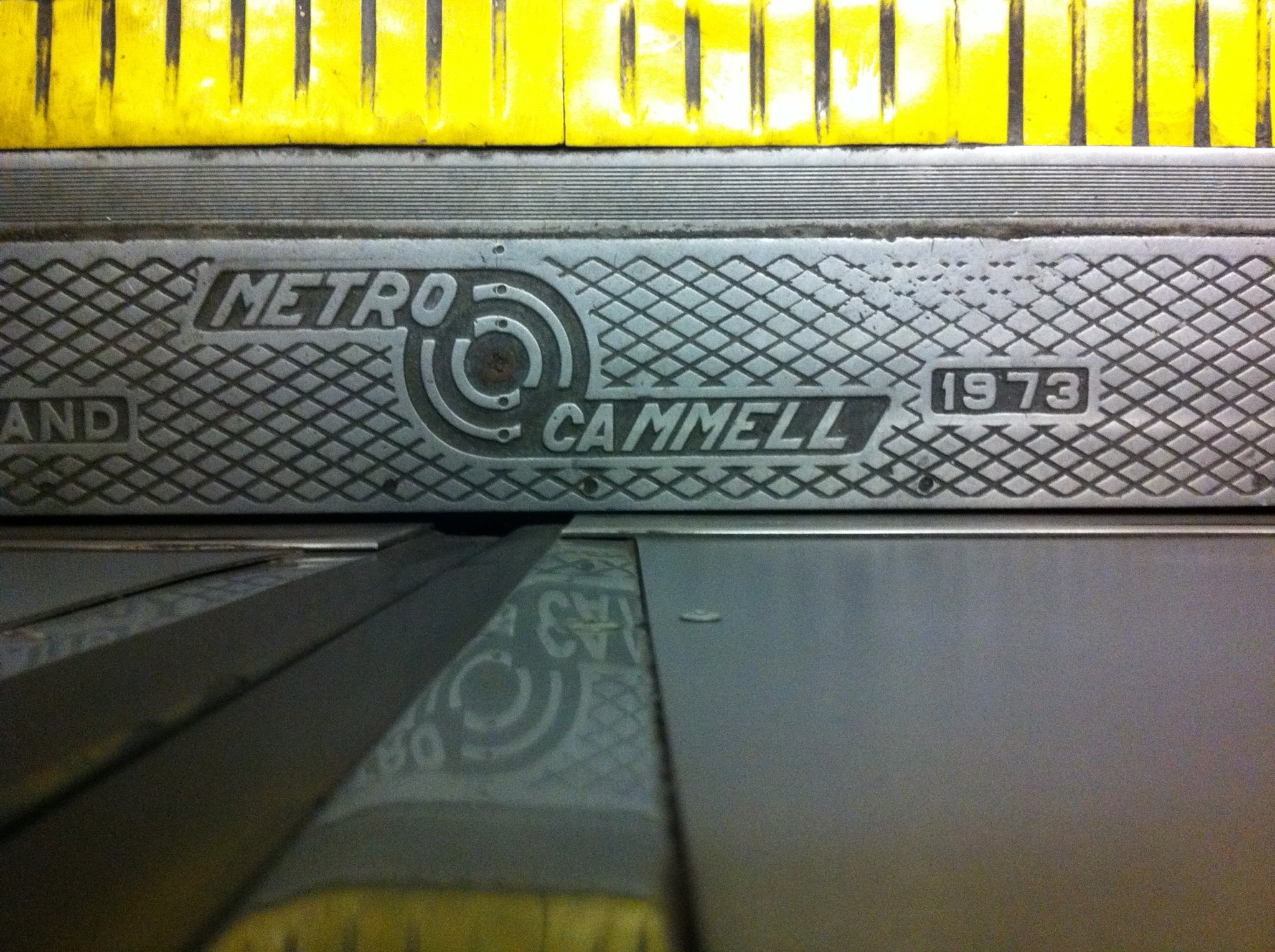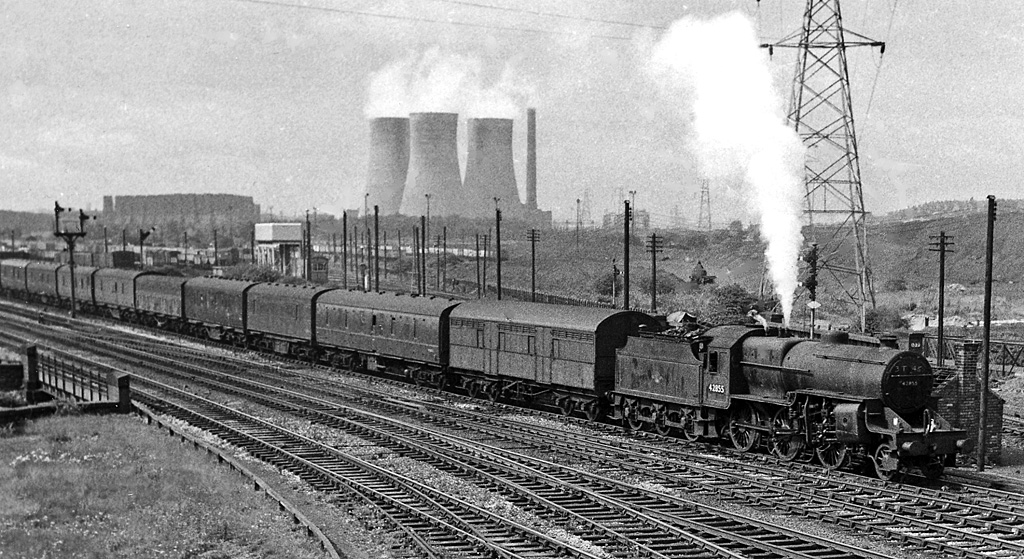|
Metro-Cammell
Metro-Cammell, formally the Metropolitan Cammell Carriage and Wagon Company (MCCW), was an English manufacturer of railway carriages, locomotives and railway wagons, based in Saltley, and subsequently Washwood Heath, in Birmingham. The company was purchased by GEC Alsthom in May 1989; the Washwood Heath factory closed in 2005 and was demolished in early 2019. The company designed and built rolling stock for the railways in the United Kingdom and overseas, including the Mass Transit Railway of Hong Kong, Kowloon–Canton Railway (now East Rail line), the Channel Tunnel, and the Tyne and Wear Metro, and locomotives for Malaysia's Keretapi Tanah Melayu. Diesel and electric locomotives were manufactured for South African Railways, Nyasaland Railways, Malawi, Nigeria, Trans-Zambezi Railway and Pakistan. DMUs were supplied to Jamaica Railway Corporation and the National Railways of Mexico. The vast majority of London Underground rolling stock manufactured in the mid-20t ... [...More Info...] [...Related Items...] OR: [Wikipedia] [Google] [Baidu] |
East Rail Line
The East Rail line () is one of the ten lines that form MTR, the rapid transit, mass transit system in Hong Kong. The railway line starts at Lo Wu station, Lo Wu or Lok Ma Chau station, Lok Ma Chau, both of which are Border checkpoint, boundary crossing points into Shenzhen and joins in the north at Sheung Shui station, Sheung Shui and ends at Admiralty station (MTR), Admiralty station on Hong Kong Island. At approximately , the line (including the Lok Ma Chau Spur Line) is the second longest line within the MTR, network, behind the Tuen Ma line. It is indicated in , formerly navy blue before the Kowloon-Canton Railway Corporation, KCR/MTR Corporation, MTR merger on the MTR, MTR map. The line connects the New towns of Hong Kong, new towns of Fanling–Sheung Shui New Town, Fanling–Sheung Shui, Tai Po New Town, Tai Po and Sha Tin New Town, Sha Tin in eastern New Territories with urban Kowloon and the Central, Hong Kong, central business district. It is also the Hong Kong ... [...More Info...] [...Related Items...] OR: [Wikipedia] [Google] [Baidu] |
Alstom
Alstom SA () is a French multinational rolling stock manufacturer which operates worldwide in rail transport markets. It is active in the fields of passenger transportation, signaling, and locomotives, producing high-speed, suburban, regional and urban trains along with trams. The company and its name (originally spelled Alsthom) was formed by a merger between the electric engineering division of Société Alsacienne de Constructions Mécaniques (Als) and Compagnie Française Thomson-Houston (thom) in 1928. Significant acquisitions later included the Constructions Électriques de France (1932), shipbuilder Chantiers de l'Atlantique (1976), and parts of ACEC (late 1980s). A merger with parts of the British General Electric Company formed GEC Alsthom in 1989. Throughout the 1990s, the company expanded its holdings in the rail sector, acquiring German rolling stock manufacturer Linke-Hofmann-Busch and Italian rail signaling specialist Sasib Railways. In 1998, GEC Alsthom was ... [...More Info...] [...Related Items...] OR: [Wikipedia] [Google] [Baidu] |
Jamaica Railway Corporation
Kingston railway station, Jamaica, Kingston railway station, closed since 1992, as seen in 2007 The first railways of Jamaica were constructed from 1845, making it the second British Empire, British colony to receive a railway system, following Canada in 1836 with the Champlain and St Lawrence Railroad.Jamaica Railway Stations Jamaica National Heritage Trust Construction started only twenty years after the commenced operations in the United Kingdom. The public passenger railway service in , which ended ... [...More Info...] [...Related Items...] OR: [Wikipedia] [Google] [Baidu] |
British Rail Classes 251 And 261
The Blue Pullmans were luxury trains used from 1960 to 1973 by British Rail. They were the first Pullman train (UK), Pullman Diesel–electric powertrain, diesel Diesel multiple unit, multiple units, incorporating several novel features. Named after their original Nanking blue livery, the trains were conceived under the British Rail#1955 Modernisation Plan, 1955 Modernisation Plan to create luxury diesel express trains aimed at competing with the motor car and the emerging domestic air travel market. Although not entirely successful – they were seen as underpowered and ultimately not economically viable – they demonstrated the possibility of fixed-formation multiple-unit inter-city rail, inter-city train services, that a decade later was developed as the InterCity 125, which resembled them in having an integral power car at each end of the train. There were two versions, built by Metro-Cammell in Birmingham: two first-class six-car sets for the London Midland Region of Brit ... [...More Info...] [...Related Items...] OR: [Wikipedia] [Google] [Baidu] |
Washwood Heath
Washwood Heath is a ward in Birmingham, within the formal district of Hodge Hill, roughly two miles north-east of Birmingham city centre, England. Washwood Heath covers the areas of Birmingham that lie between Nechells, Bordesley Green, Stechford and Hodge Hill. Geography Saltley on the south-western side and Ward End on the north-eastern side of Washwood Heath are the two areas that cover the entire ward, though some parts near Nechells and Hodge Hill do not come under either of these and are simply headed under "Washwood Heath". One of the area's major employers was the railway works owned by Metropolitan-Cammell (later Alstom), but it closed in 2005. In the 2020s, Washwood Heath railway depot is to be constructed as part of the High Speed 2 project - to service and maintain the high speed trains. Demographics According to the 2001 Population Census, there were 27,822 people living in the ward with a population density of 5,335 people per km2 compared with 3,649 ... [...More Info...] [...Related Items...] OR: [Wikipedia] [Google] [Baidu] |
Kowloon–Canton Railway
The Kowloon–Canton Railway (KCR; ) was a railway network in Hong Kong.Legislative Council information paper CB(1)357/07-08(0 THB(T) CR 8/986/00, CB(1)1749/07-08(0/ref> It was owned and operated by the Kowloon–Canton Railway Corporation (KCRC) until 2007. Rapid transit services, a light rail system, feeder bus routes within Hong Kong, and Inter-city rail, intercity passenger and freight train services to Mainland China, China on the KCR network, have been operated by the MTR Corporation since 2007. While still owned by its previous operator, the KCR network (which is wholly owned by the Government of Hong Kong, Hong Kong Government through the KCRC) has been operated by the MTR Corporation Limited under MTR-KCR merger, a 50-year, extensible, service concession since 2 December 2007. The two companies have merged their local metro lines into one unified fare system. Immediately after the merger, steps were taken to integrate the network into the same fare system as the MTR, a ... [...More Info...] [...Related Items...] OR: [Wikipedia] [Google] [Baidu] |
Metropolitan Railway Carriage & Wagon Co
Metropolitan may refer to: Areas and governance (secular and ecclesiastical) * Metropolitan archdiocese, the jurisdiction of a metropolitan archbishop ** Metropolitan bishop or archbishop, leader of an ecclesiastical "mother see" * Metropolitan area, a region consisting of a densely populated urban core and its surrounding territories * Metropolitan borough, a form of local government district in England, United Kingdom * Metropolitan county, a type of county-level administrative division of England, United Kingdom * Metropolitan Corporation (Pakistan), a local government authority in Pakistan Businesses * Metro-Cammell, a British manufacturer of railway stock * Metropolitan Books, an imprint of Henry Holt and Company * Metropolitan Stores, a Canadian former department store chain * Metropolitan-Vickers, a British heavy electrical engineering company Colleges and universities United Kingdom * Leeds Metropolitan University, England * London Metropolitan University, England * Manche ... [...More Info...] [...Related Items...] OR: [Wikipedia] [Google] [Baidu] |
British Railways
British Railways (BR), which from 1965 traded as British Rail, was a state-owned company that operated most rail transport in Great Britain from 1948 to 1997. Originally a trading brand of the Railway Executive of the British Transport Commission, it became an independent statutory corporation in January 1963, when it was formally renamed the British Railways Board. British Railways was formed on 1 January 1948 as a result of the Transport Act 1947, which nationalisation, nationalised the Big Four (British railway companies), Big Four British railway companies along with some other (but not all) smaller railways. Profitability of the railways became a pressing concern during the 1950s, leading to multiple efforts to bolster performance, including some line closures. The History of rail transport in Great Britain 1948–1994#The Modernisation Plan, 1955 Modernisation Plan formally directed a process of dieselisation and Railway electrification in Great Britain, electrification ... [...More Info...] [...Related Items...] OR: [Wikipedia] [Google] [Baidu] |
Keretapi Tanah Melayu
Keretapi Tanah Melayu Berhad (KTMB) (; Jawi: ) or colloquially referred to simply as KTM, is the main rail operator in Peninsular Malaysia. The railway system dates back to the British colonial era, when it was first built to transport tin. Previously known as the Federated Malay States Railways (FMSR), the Malayan Railway Administration (MRA), and the Malayan Railway, Keretapi Tanah Melayu acquired its current name in 1962. The organisation was corporatised in 1992, but remains wholly owned by the Malaysian government. History In 1948, the FMSR was renamed the Malayan Railway. The railways had been devastated by the Japanese invasion of Malaya, and efforts were taken to rebuild the two main lines, but many branch lines were abandoned in the process. The MR began to modernize the equipment with the ordering of diesel locomotives and railcars to replace steam-hauled services, and the first diesel locomotive entered service in 1957. The railcars entered service in 1960, i ... [...More Info...] [...Related Items...] OR: [Wikipedia] [Google] [Baidu] |
Saltley
Saltley is an inner-city area of Birmingham, England, east of the city centre. The area is part of the Washwood Heath ward, and was previously part of the Nechells ward. It is part of the Ladywood constituency in the city. History Saltley was originally an unverified parish within the estate of the Adderley family and their descendants, who had built their original residence Saltley Hall on the site of what is now Adderley Park. As water became a key resource, the family moved their residence to Hams Hall for better access to the River Tame. When the English Civil War occurred, the Adderleys like most gentry chose to support the Royalist cause, and paid heavy fines afterwards for being on the losing side. In 1845 railway carriage makers Joseph Wright and Sons relocated from London to a factory built on meadowlands in Saltley; the company eventually became Metro-Cammell, who remained in Saltley until 1962. As Birmingham developed as an industrial location, Saltley became a ... [...More Info...] [...Related Items...] OR: [Wikipedia] [Google] [Baidu] |
Tyne And Wear Metro
The Tyne and Wear Metro is an overground and underground light rail rapid transit system serving Newcastle upon Tyne, Gateshead, North Tyneside, South Tyneside, and the City of Sunderland (together forming Tyne and Wear). The owners Nexus have described it as "Britain’s first light rapid transit system". The system is currently both owned and operated by the Tyne and Wear Passenger Transport Executive (Nexus), thus is fully under public ownership and operation. The Metro was originally conceived of during the early 1970s, incorporating much of the earlier infrastructure formerly used by the Tyneside Electrics suburban network, with some elements dating back as far as 1834. Construction work began in 1974, the majority of this activity being centred on the building of new tunnels and bridges that linked with several preexisting railway lines that were converted. In parallel, a purpose-built fleet of Metrocars was procured. The first section of the Tyne and Wear Metro was op ... [...More Info...] [...Related Items...] OR: [Wikipedia] [Google] [Baidu] |







